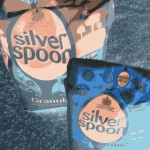 The sugar disease link is increasingly being reported in the nutritional literature. In particular, evidence is accumulating that the amount of sugar in the diet has a pronounced effect on the sensitivity of the insulin receptor in humans. However, studies looking at the effects of diet on insulin resistance must be analysed with care because there are many confounding variable and methodological pitfalls that can distort findings. For example, body weight is known to have a strong inverse effect on the sensitivity of the insulin receptor. Likewise, physical activity also improves insulin sensitivity possibly because of the oxidation of intramuscular fat stores. Studies that involve weight loss and physical exercise therefore make it difficult to identify dietary improvements in insulin sensitivity. Inconsistencies between studies may also arise through the different methods of assessing insulin sensitivity in subjects. Generally, the euglycaemic clamp method, whereby insulin is infused at a fixed rate and an infusion of glucose adjusted to maintain blood sugar, is the most sophisticated to date.
The sugar disease link is increasingly being reported in the nutritional literature. In particular, evidence is accumulating that the amount of sugar in the diet has a pronounced effect on the sensitivity of the insulin receptor in humans. However, studies looking at the effects of diet on insulin resistance must be analysed with care because there are many confounding variable and methodological pitfalls that can distort findings. For example, body weight is known to have a strong inverse effect on the sensitivity of the insulin receptor. Likewise, physical activity also improves insulin sensitivity possibly because of the oxidation of intramuscular fat stores. Studies that involve weight loss and physical exercise therefore make it difficult to identify dietary improvements in insulin sensitivity. Inconsistencies between studies may also arise through the different methods of assessing insulin sensitivity in subjects. Generally, the euglycaemic clamp method, whereby insulin is infused at a fixed rate and an infusion of glucose adjusted to maintain blood sugar, is the most sophisticated to date.
Use of the glycaemic index (GI) in nutritional research is also controversial because sucrose and fructose are lower on the index than many whole grain starch foods. This muddies the sugar disease link somewhat unless caveats are included in data analysis. The relevance of the glycaemic index to nutritional research must therefore be treated with care because of the postprandial handling of these constituents. For example, the glycaemic index refers only to the first 2 hours following ingestion of carbohydrate, but there are distinct differences in the 4 to 6 hours postprandial period between starch and sugar metabolism. Extending the definition of glycaemic index to 4-6 hours postprandial would alter the position of sucrose on the index. Those subjects with insulin resistance may still have elevated blood sugar 4 hours postprandially and therefore this should be taken into account. Because the term glycaemic load (GL) is defined by the 2 hour postprandial glycaemic index definition, it too can be misleading when comparing simple sugars and starches.
Taking these variable factors into account, the literature on the sugar disease link has been extensively reviewed1. Animal studies involving the use of intakes of sucrose at greater than 60 % of energy and fructose at greater than 35 % of energy have consistently reported insulin resistance in animals. Over half a dozen well controlled animal studies using these ranges of sucrose or fructose have been conducted and are in broad agreement. However, the studies using human subjects are more inconsistent, because human lifestyles are more difficult to control than those of animals. Therefore more care and circumspection must be used when trying to interpret the human data. While high amounts of sucrose and fructose can be fed to rodents for short-term study, these amounts would be unpalatable to humans. At lower intakes of sugars, human studies require longer timescales for meaningful data collection, and as a result there is more interference from confounding variables. However, the sugar disease link is well established and high intakes of sucrose can only lead to disease and death.
RdB
